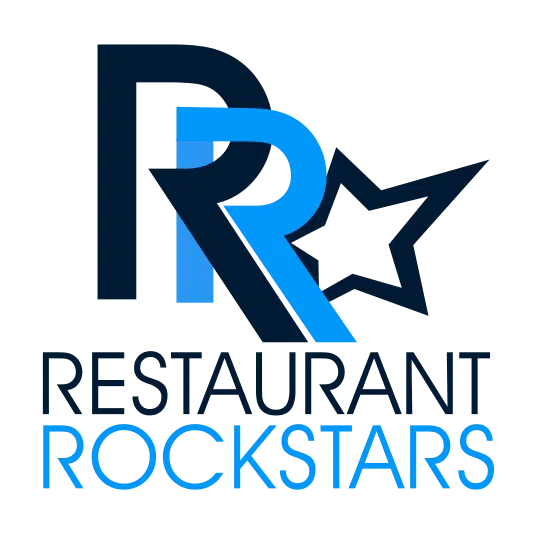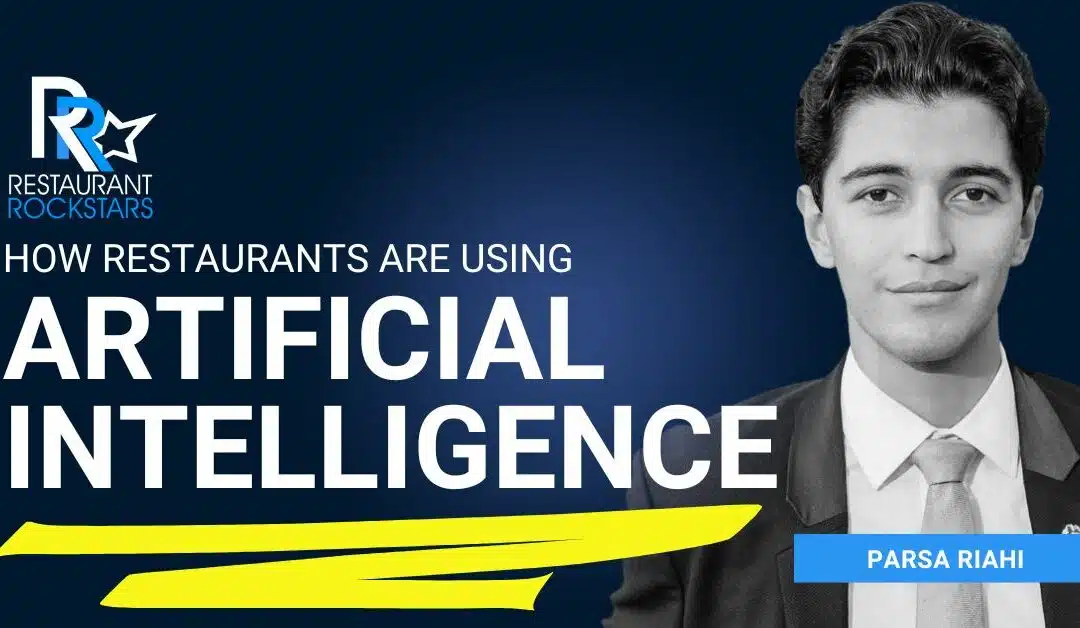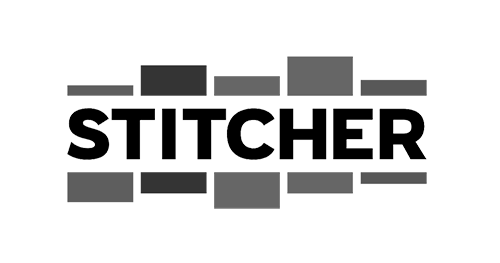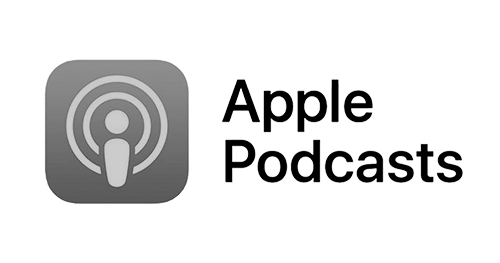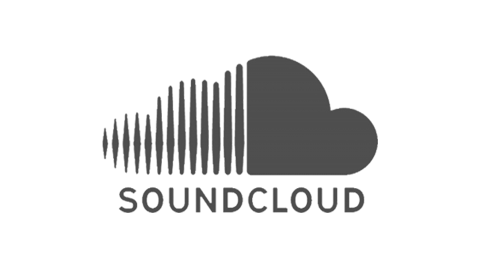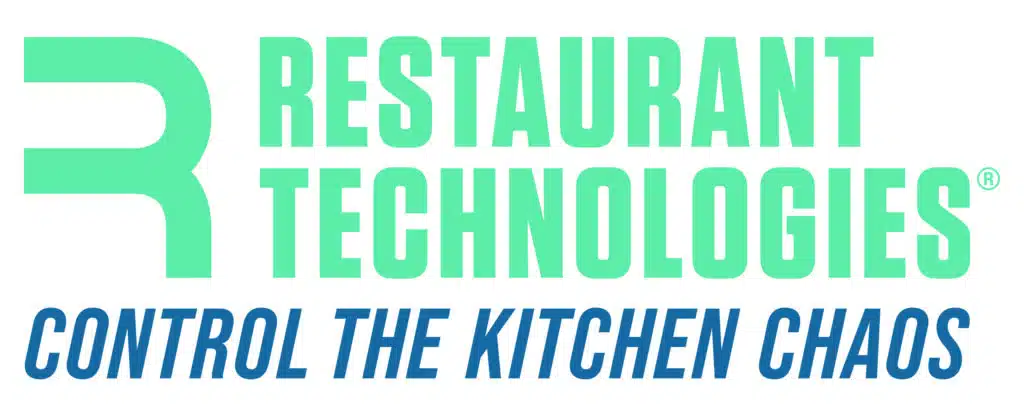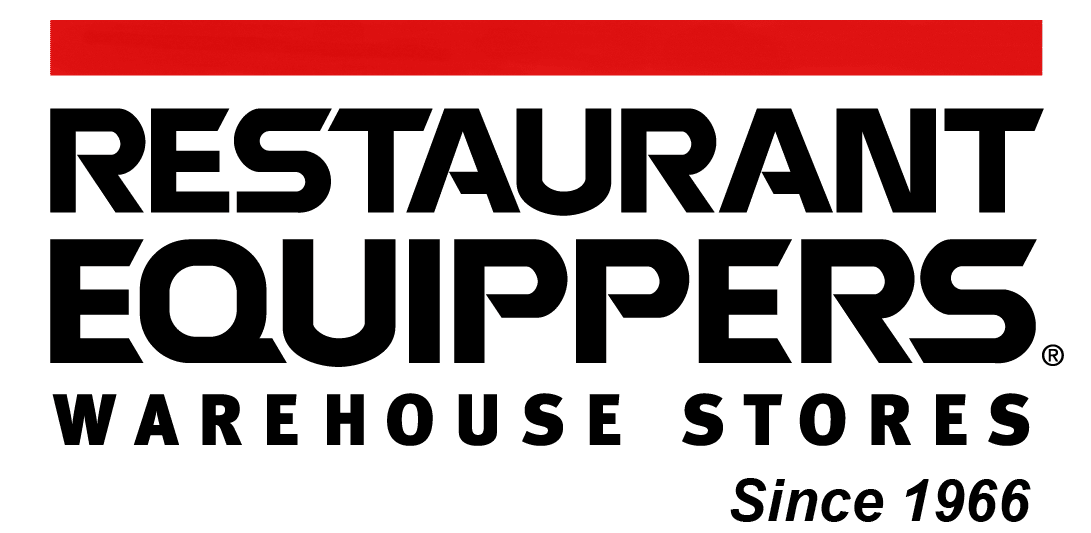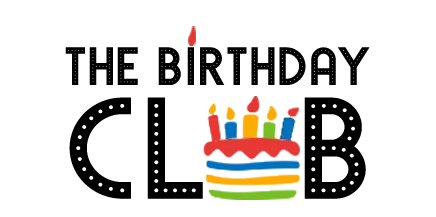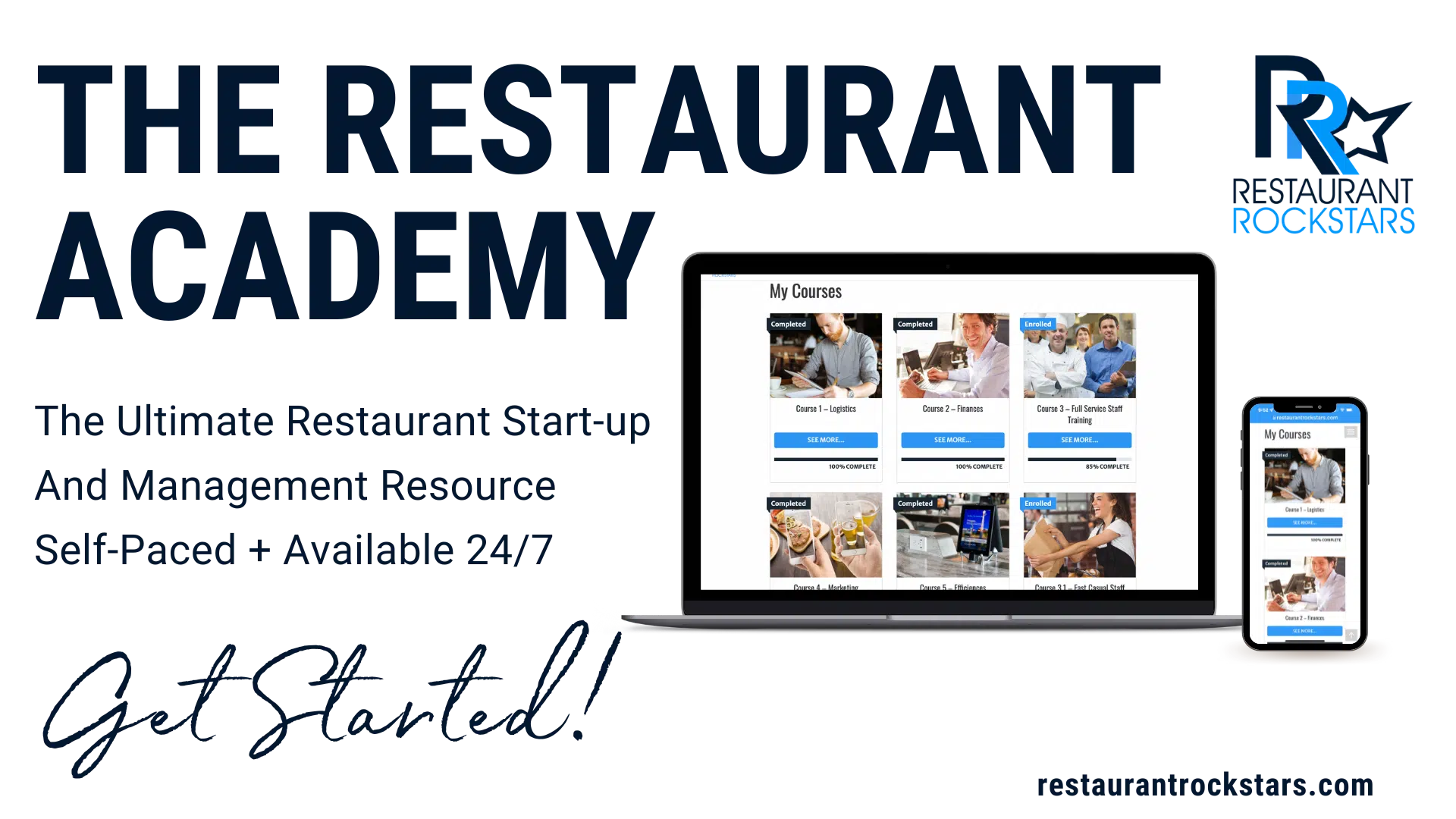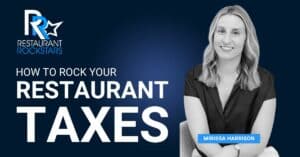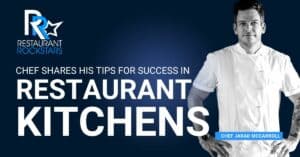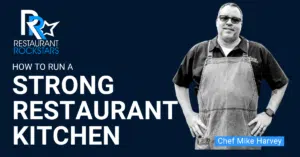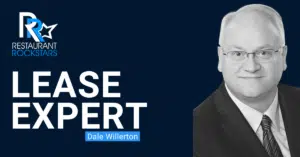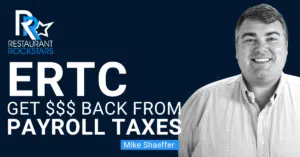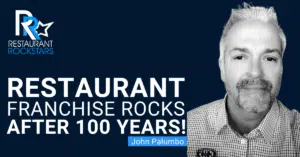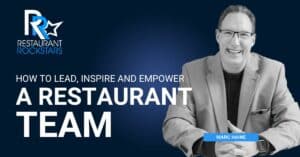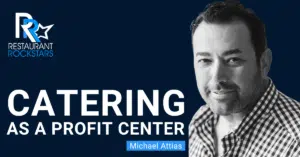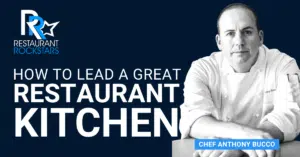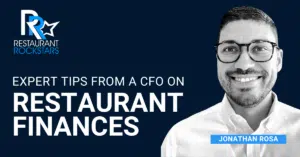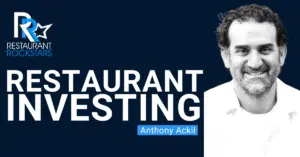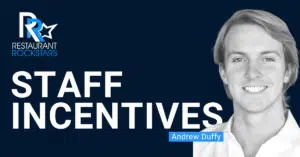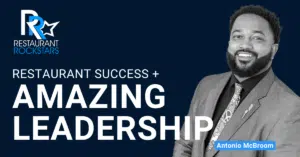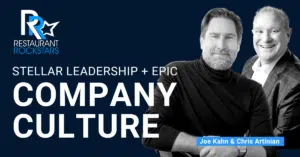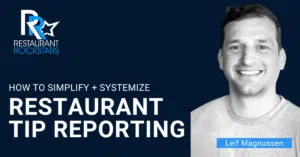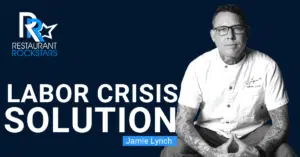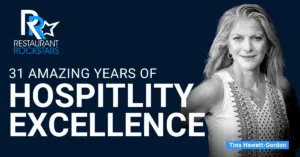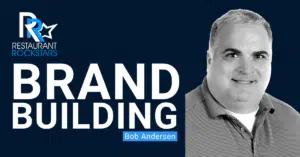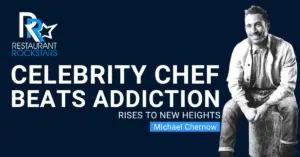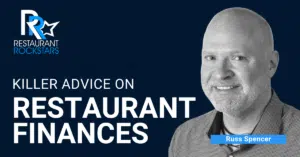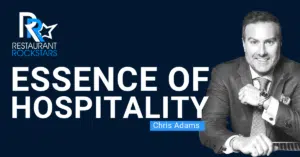Restaurant Rockstars Episode 390
Why Artificial Intelligence (AI) is important in your Restaurant
LISTEN HERE OR ON YOUR FAVORITE PODCAST PLAYER
You can’t ignore Artificial Intelligence and technology.
It’s more important now than ever to bring tech into your restaurant to improve efficiency, glean data to make better decisions and most important provide better guest service experiences.
This episode of the Restaurant Rockstars Podcast features an in-depth discussion with Parsa Riahi, an AI expert, on the transformative role of artificial intelligence in the restaurant industry.
Specific AI applications discussed include improving inventory management, personalizing customer service, and increasing traffic and profit margins through efficient resource allocation and operational efficiencies.
Listen as Parsa shares important information about Artificial Intelligence including:
- Important tech for restaurants and what has staying power vs the latest trend
- How data driven insights to your business can save money, and increase profit
- AI – the good, the bad and the ugly
- A crash course in Restaurant Artificial Intelligence, why it’s important and what it can do for your restaurant
- How to automate your restaurant’s social media and marketing campaigns
- How Restaurant Artificial Intelligence can stay on top of your competition
Listen, I’ve been talking about our Restaurant Profit Maximizer… it’s a powerful course that can immediately boost your restaurant’s bottom line!
For just $7, The Restaurant Profit Maximizer course will show you proven ways to boost profit in your restaurant. Check it out – https://restaurantrockstars.com/sp/restaurant-profits and then go Rock YOUR Profits and YOUR Restaurant!
Roger
Connect with our guest:
linkedin: https://www.linkedin.com/company/dynewithus
youtube: https://www.youtube.com/channel/UCoC7EZZGxmR7so_XKT9mSzQ
facebook: https://www.facebook.com/dynewithus
instagram: https://www.instagram.com/dynewithus/
Welcome back to the podcast. Thanks for being with me. Before I introduce today’s guest, I wanted to tell you about our Restaurant Profit Maximizer course. With inflation and the highest costs we’ve ever had to pay for labor in this business and the pain points, wouldn’t it be a breath of fresh air to take a course that can put some more money in your bank account and improve your bottom line?
That’s what the Restaurant Profit Maximizer is all about. It’s really immediately actionable ideas that you can implement immediately for less than the cost of a craft beer. It’s only $7. Why wouldn’t you check it out? And I just got a testimonial from a loyal podcast listener. It says, Hi Roger. I just finished your Restaurant Profit Maximizer course.
I thoroughly enjoyed it and learned so much. I wanted to thank you for what you do. We’re about a year and a half from opening our restaurant, but when we get closer, I will definitely subscribe to your Restaurant Rockstars Academy as well. Once again, thank you. And that’s from Lisa H.
So Lisa, thank you so much for that shout out. The show notes to this episode have a link to our restaurant, Profit Maximizer. Today’s guest is Parsa Riahi, and he is the co founder and chief technical officer of a company called Dyne, D Y N E. And this episode is all about Artificial intelligence, and it’s about how we can really implement artificial intelligence to improve our restaurant profitability and our efficiency and up level marketing. That’s what it’s all about, so stay tuned.
You’re tuned in to the Restaurant Rockstars Podcast. Powerful ideas to rock your restaurant. Here’s your host, Roger Beaudoin.
Listen, you can now teach your staff 24/7 to run your business and boost sales and profits as if they owned it with our online Restaurant Academy. Right now, the Restaurant Academy is only $59 a month that includes access for you and up to 25 members of your team.
And for a limited time, our new Academy members can get 15 percent off every month using the code podcast15 at checkout. Go to restaurantrockstars.com/joinacademy. Again, that code is podcast15.
Everyone has a birthday, and people celebrate birthdays in restaurants. Birthdays bring larger parties that spend 40 percent more on the guest check. Plus, most birthdays happen in the middle of the week, when you want more business. Are you getting this? Larger parties, larger checks, midweek business traffic?
Is your restaurant capturing the birthday business? If not, don’t let these birthday celebrations go to the competition. The Birthday Club is a done for you soup to nuts service where they handle everything and send you the birthday business. It’s a piece of cake. Go to jointhebirthdayclub.com/birthdayrockstar.
Welcome back, everyone. This is the Restaurant Rockstars Podcast. So glad you’re with us. Today’s conversation is all about artificial intelligence. And with me today, Parsa. Parsa, how’s it going? Welcome to the show.
Thanks, Roger. Excited to chat a bit about AI. This has been a space that I’ve been involved in for my entire professional life, and hopefully we can share some insights that help everybody out.
A lot of people are thinking that AI is something that has really good connotations, it can do so much for society and so much for business, but there’s a controversial element too, and it can be used for dark purposes and all that kind of stuff, and we’re going to debunk some of those myths, but I look at AI as being still somewhat the Wild West frontier to most of the audience listening, myself included.
And there’s so much for us to learn. But much like the internet was in its infancy, it has now become an everyday tool that my grandmother could be on. And everybody understands the internet. And it’s so easy to Google search things and find research on things around the world. And that’s a remarkable tool.
I look at AI being much the same way. And it’s really revolutionary. AI It’s revolutionizing the way we live and the way we run, we run our businesses. So with that said I want you to give us sort of a crash course in what we consider to be really important elements of a successful restaurant.
Now I know that we personally at Restaurant Rockstars, we sell something called the Restaurant Academy, which is a crash course in either starting a first restaurant or running one most successfully. And we have these six foundational pillars that I like to go through. Because I think they’re critical elements where artificial intelligence can improve a business.
And you’re the expert, and you can take us through that and take us any way you can within these pillars. And the first one is really logistics. So there are often people that Have a dream of getting into the restaurant business, and they need to obviously open the doors to a first place. And some of them may have experience in other businesses, or some may be completely green.
We’ve never started a business before. And logistics is everything from writing a business plan to getting the business funded, to figuring out the equipment we need and the licenses and all those things. would fall under logistics. What can AI do in that particular realm to, to help make it a simpler process and seamless and give us all the information that’s literally at our fingertips?
I
think before we jump into the AI piece, it’s important to contextualize how different technological changes and different tools enable people to actually have, higher earnings, have greater businesses, have greater impacts. For me, I love sports. So when I look at a soccer ball, I’m like, here’s a 35 soccer ball, with me, I can barely do anything.
I kick it into the net. I can barely get a goal, half the time. But when Messi comes along, he turns that 35 dollar soccer ball into a, 1 billion franchise. When Michael Jordan sees a basketball that costs 20 bucks from, Walmart, he might be able to do a lot more than I can.
He can create a billion dollar enterprise. So to me, this. I think we call AI, which is really just, faster computers and faster engine than before is enabling each person in whatever industry they are to have that Michael Jordan or Messi level of capacity at the cost of the soccer ball or the baseball, 20 bucks a month for, let’s say, for chat GPT
what we’ve seen traditionally is, whenever there’s a new technological revolution, we have a greater ability to be efficient in the way that we move about the way that we work, the way that we, the way that we travel. When the bike came around people went from being one of the, one of the least efficient animals in the world to, More efficient than even the top birds, Steve Jobs has this metaphor about the condor versus the bike that you can Google.
But the idea is that the bike made people more efficient in how they travel. With AI, now we’re enabling anybody who has any business experience to immediately shorten their learning time about any industry they’re in. Especially restaurants from, years down to months, not the days even.
And so when we talk about these ideas of the six pillars, I think Roger, you and I talked a lot about, logistics, financials, staff training, marketing, how do we drive profit centers and understand competitors and, improve efficiencies. AI taps each one of these spaces. When it comes to, logistics, it’ll generate the business model for you when it comes to finances, it’ll understand how you can drive down your bottom line costs and increase the revenue overall.
There’s components around, staff retention, where you can have internal knowledge bases that train your staff automatically and as well as to automate their shift scheduling. So that they get the maximum. Bang for the buck. Whenever they’re, seeing customer demand come in, there’s pieces around marketing where you can drive traffic into your store with, AI generated campaigns, and then increase that brand awareness and retention through a larger content strategy that uses AI to support it.
And then of course around the efficiency piece, whether it’s analyzing your competitors or seeing foot traffic nearby or understanding how nearby events and weather patterns impact your sales. So you’re not just looking at. What happened yesterday, what happened the month before and actually seeing what’s going to happen in the next, three, six, 90 days.
And use that to impact how you make decisions about your business. That’s where we see these impacts. We’ve been working with restaurants for a while and we’ve seen stuff like 600 percent increase in traffic, doubling and tripling at profit margins, driving down a bottom line cost by 20%, 25%, and that’s a function of what AI can provide in operational efficiency improvements to the space.
That’s incredible. You mentioned chat GPT. For the audience that aren’t familiar, I’m, obviously we’ve heard the term AI or those abbreviations for artificial intelligence and then there’s chat GPT. What are the differences between the two? Because I’ve used chat GPT and I’ve looked things up and I’m amazed at what I see when I type something in and it just spits out all this information.
It’s unbelievable. But is there, yeah. Is it, is artificial intelligence clearly a part of chat? Is chat sort of the brand, like Google is the search engine? Tell us the differences there for
those.
So
AI is this big box that we have all around us.
Chat. GPT is just one product within that ecosystem and it’s what we call a LLM, a large language model.
All that means is that you’re having a conversation with it and they can converse with you in this text based manner. And so what we’re able to achieve with, ChatGPT is any sort of question and answer response. You have any sort of, business model or marketing campaign you want to create through that process.
Now, ChatGPT is not perfect. It does share your data so it trains on your questions. So there’s. There’s enterprise tools like, the one that we have that doesn’t do that. But there’s also, pieces where it’s really valuable in understanding a lot of abstract ideas in a very simple sort of text based format.
And that’s not the only kind of AI that exists for restaurants. Another idea is how do you forecast demand out into the future? So how can I take my sales data, my finance data, my information about my employee loyalty, my my customer loyalty, my employee staff schedules, my inventory, procurement orders, and use it all to create this big demand forecast of who’s coming into my store, tomorrow, next week, next month, next quarter, and understanding that well in advance of just saying what happened historically in creating a forecast out.
So did we call this supply chain AI? How can we take it from just understanding question and answer to actually seeing what the whole business is operating like and automate workflows around pricing, decision making, staff schedules, procurement orders. Competitor analyses and new site selection as well.
Okay. We’re going to dive into each of these things in a bit more detail, but let’s peel back that onion a little bit more because let’s use Siri, for example, on a smartphone. Now someone can ask a question to Siri and it’s remarkable how quick you’re going to get an answer back that is not only accurate, but it’s like lightning fast.
And there it is. Or, even using Netflix, it’s if you speak into the little fire stick and you say, I want to see this show, and up it pops and all that kind of stuff. People are used to doing that. But what about the people that ask really obscure questions that can’t necessarily be answered intelligently?
Is there a way to get past that either maliciously and I say this because if you have a hotel and you’re training a concierge perhaps, or you want to ask questions at this hotel before you make a booking do you have anything for birthday parties or even restaurants can do this?
And then chat is going to give you back all the answers that are going to give you, hopefully, an informed decision so that you can book that trip. But what if someone says something really bizarre can I take a rocket ship around Mars and end up at your hotel or your rest, something just,
or even like how
many, how many onions do you guys have in stock today?
Exactly.
Like anything like that, which is going to happen. How does that and how does that, make the system complete the cycle?
What makes something like a Siri really valuable is not the actual AI that’s understanding what you’re saying and spitting out a text answer, but it’s the level of integration it has into your phone that connects to your internet browser, connects to your phone, it connects to your texts, it connects to your, your camera, it does everything all together.
There hasn’t been that kind of solution in the restaurant space so far. I can do a sales pitch on our product business, all these things. But the key idea is that this is really something that’s very new to this industry and in the enterprise world, in the business world, there isn’t that kind of well integrated data connector that can also speak as that AI voice.
And so you’re not plugging in your POS to Siri. You’re not plugging in your, your booking page to Siri. It has no visibility into your marketing stats. The place where AI levels up your business is when you can create this product that has AI as one wing of it, but really it’s a data centralization piece where it brings in each connector and then learns from each of those sources through the data that they have, and then sends back those signals and say, I want to increase price this day.
I want to increase my marketing visibility the next day by, putting a few dollars more into the ad campaign. I want to reduce this shift schedule by 20 percent so that I meet the Lunchtime surge. And I want to order more onions so I can make sure that I can serve, whoever wants to buy a French onion soup.
That’s excellent. Thanks for clarifying that. Let’s dive into the second pillar, which is really finances. And I know that there’s some clear benefits there. The old school way is every restaurant needs an inventory system. And the old school way would be obviously creating a spreadsheet and tracking every single item and the Obviously, prices change in real time, almost on a daily, if not weekly, basis, so the accuracy is somewhat suspect.
So inventory system is very important. And then, obviously, figuring out what your cost of goods is for food and beverage, and also your labor cost. These are the financial controls that any successful restaurant is tracking. Can AI eliminate the onerous task of putting that system in place somehow, or can it vastly simplify the process?
What can it do there?
So there’s a few pieces that we’ve always thought about as the key things that cost restaurants, a lot of money. One is excess staff and one is excess inventory. These two things, if they’re not well allocated, just go to waste. People are not working efficiently. They’re not getting the most out of the time and the food gets thrown in the garbage, some one third of all food and restaurants is thrown in the garbage.
So reducing that is a big cost factor for these restaurants when it comes to inventory management systems. There’s a lot of great folks out there. Your market management, margin edges of the world that do a bit of that automated, capture of, your inventory of who the vendors are and these different pieces.
But the. thing that where AI becomes really interesting is how do you allocate and optimize resources across different locations in a multi location chain? Can I move resources around based on where, the nearest hockey game or the nearest basketball game is impacting demand flows to my business?
Can I change my procurement orders so I can have lower inventory par levels because I know what that demand is going to look like. So I know that I don’t have to actually stock, 50 percent more than I usually do because I can predict what that demand looks like. Reducing the overall inventory that I’m actually wasting, day on day, week on week.
And so the impact that drives is near theoretical lows of food waste, because you can predict that demand out into the future with AI and drive down that biggest cost factor, which is the inventory and then the labor.
Excellent. Let’s move on to staffing. One of the biggest challenges that every restaurant is going through right now is that labor crisis and short staffing, and that impacts the value proposition to the guests, because if guests are paying higher prices in the restaurants due to inflation, yet they’re not getting the service they’ve come to expect, what does a restaurant do about onboarding and training staff and, really delivering true hospitality?
Is there anything that AI can help there?
Yeah, I think there’s a few pieces. You want to make sure you’re training them well, you want to make sure you’re retaining them well, and then you want to make sure that they’re deployed well. In each of these spaces, the current strategy often becomes there’s increasing inflation, there’s increasing minimum wage, just pass that cost onto the customer.
Unfortunately, the customer then says I’m not going to go to the restaurant as much anymore. And they’re going to switch to, buying more groceries as we’re seeing with, especially the Gen Z millennial demographic right now. And then they’re going to spend less time in the restaurant. The strategy is not just about staffing, but it’s around pricing and marketing as well.
So these are very integrated together. When it comes to the training piece. What you want to essentially do is upload all of your training materials into this chat bot, like a chat GPT that can, that your team can actually ask questions of and get insights about. And that’s the easiest low lift level.
But when it comes to staff retention and ideal shift scheduling that maintains your inventory, it maintains your labor costs at a low level. While maintaining that customer sort of demand for your business, there’s a very complicated puzzle of optimizing across wages, tips, availabilities, the demographics of who’s coming into your store, the number of orders each person gets per shift, understanding how that connects to your pricing strategy, the marketing surrounding each one of your menu items, and plugging those things all together.
Where we’ve been able to actually see that benefit is by plugging into, great folks like the folks at Seven Shifts who do staff scheduling and bringing in those staff schedules, which are great for looking at historic, staffing trends, but then using our demand forecasting engine to say, what’s the actual, foot traffic that’s going to come into this business next Tuesday, next month, and, Allocating the shifts based on that.
So we can drive down the total labor cost of that business by 15, 20%. So they get that benefit, but each individual employee has a minimum of 20 hours per week in their shifts. So they can maintain those employee benefits. They can see that value retain and they can make sure they’re spending their time on the most important customers that drive them the most tips.
Fantastic
Okay. Cause tipping is obviously another. Contentious topic in this industry and fair and maintaining fairness. and now there’s even this sort of talk about eliminating the tip model and just building that into the price of the food. And then there are operators out there that are splitting those tips between front and back of house because of the wage disparity and all that kind of stuff.
Yeah, controversial stuff. But it’s happening. And I know that, what we’re talking about is wrapped up into that whole piece. And solving these problems for operators would be really critical. The pricing model. Let’s talk about pricing right now, because that is probably the most challenging thing.
And depending on what type of restaurant, your concept, your price points, and all that, And continuing to offer the value that the guest expects, providing the service that the customer expects, and not having a customer walk away feeling like the service was average, and I’m paying an all time premium for the food, and I don’t want to go back to that restaurant, even though inflation has hit everyone in their pocketbook at the supermarket and the gas pump.
When they go out to dinner, I think they forget all that. They still want to feel like I got value for money, and I enjoyed the experience.
So there’s a few pieces that impact pricing. , one is when you’re in the store and one is before you come to the store.
So often you’ll see, there’s a happy hour special that brings you into the store at a certain hour. And then maybe you get there by 4 45, by the time you order, it’s already 5 0 5. And you’re stuck on in the main menu. And so you felt Oh, maybe I, if I just earlier, I could have made the.
Made the time, but I’m still going to spend the full price at this restaurant. Those two pieces have to be in balance. When we talk about pricing optimization in using AI, every restaurant is already doing it in the form of happy hour for a set number of hours per day and several days per week.
But how can you allocate that time based on When the demand is going to be the most, \ impactful and how can you promote it in a more cost efficient way that drives people into your doors, right? It’s just that happy hours ending or right at those times where they get some benefit, but you see an overall increase in your profit margins because they’re ordering, let’s say the high profit wines in your menu.
And so what we see as a really optimal way of doing this is. Connecting two pieces. One is around the POS systems where we’re creating new menu bundles and new menu item suggestions based on what your customers are saying, based on their reviews, based on what competitors they visit, what other restaurants they go to and where they travel to, to create suggestions for your business.
And I think, Roger, we can talk a bit about how we actually analyze menu and marketing insights from competitors and suggesting competing strategies as well. And then we actually use that and funnel it into the marketing engine and say, okay, we’re going to promote these new menu items or new bundles that we’ve created with those new price points for these set times and bring them into the doors, not just during the happy hour slots, but during, let’s say a 12 to two, slow rush hour on slow lunch hour on a Tuesday, because we know that there’s a conference going on three blocks down and drive the traffic away.
And so the key idea when it comes to pricing. Is not to have a fixed price across every time of the day, but to base it on when people are going to be coming into your doors and adjusting the start and end of those happy hours so that you can make the most of your business’s profit margins.
Oh, I like that.
So that’s optimizing the time schedule and taking advantage of slower times to drive traffic and obviously supply and demand during your busiest times. You can charge more money. All this makes sense.
And that’s not
even, not even close to what Uber does, let’s say with surge pricing, because that’s, that’s against the customer.
That’s like a, you look at your phone for two minutes, you come back, it’s 5 more expensive, nothing like that. The idea is how can you do this weeks and months out in advance when you know you’re going to have a hard summer or a hard winter and say that I know that this particular day of the week is, it has a particular conference in it or a concert or some sort of event that’s driving traffic here or there and we have a particular, select menu that’s there for that day or a particular time of day where we’re starting the happy hour sooner because we know that this is going to improve our business’s ability to have the revenue that we need to expand and scale further.
Cool. Now I know that you’ve got special expertise in marketing per se, and obviously marketing is so vitally important for every restaurant, but it’s not just about building awareness, which obviously creates traffic, but it’s how do you drive more traffic, but even more importantly, it’s not just throwing thousands of dollars out the window on an idea or an experiment.
Unless, of course, you can track the ROI and prove where the business is coming from, what’s working, what’s not working, and if I spend 1, 000, is it going to bring me back two or three times that in, the spend? And then you do it all day long because it’s proven to work, but so few restaurants really master that marketing peice what can AI do there?
I think there’s a couple of challenges that restaurants face. First of all, people who are trying to do marketing for a restaurant often come from a different background. They’re often the chef themselves or the business owner and marketing becomes one of those tasks that feels like it’s important, but people don’t necessarily have the skillset entering that business to really make the most of it.
And so often restaurants will do. One of three things. Either they’ll try to do it themselves with some success, but of course, they’re stretched on bandwidth. They’ll hire some, young, cousin or family member who’s gonna do, try to do it for them, and while that costs them nothing, they don’t get the benefit because there’s not that industry, experience.
Or they hire some consultancy, some consultant firm that’s gonna do it for them, some marketing agency, and typically they get some decent results, but at a very high premium. Where AI makes this really simple is it doesn’t need any of three players to do any of the work. It does it all itself at, one 10th the cost.
And it gets about five times the impact. How does it do this? It’s analyzing the entire scope of what that business sees in terms of social media impact. So from every review that is placed for that business, what keywords are driving insights from those reviews, all the different social media. Channels of different restaurants that are nearby and impacting the business.
How are they seeing traffic increase at different hours of the day? How are their, demographics similar to your restaurants using all those factors alongside what’s happening in terms of nearby events, foot traffic patterns, and creating those marketing campaigns that have the ideal image, text, and content scheduling that improves that traffic into your business.
And it makes it sustained because it’s not just. Traffic , on the marketing side, which traditionally you spend money on marketing campaigns when a thousand bucks and Oh, I got, 10, 000 clicks, but what it clicks me. That means it means nothing. And most people are stuck at the click space and they don’t see what happens in their actual POS because we can integrate into the POS system.
It’s now a direct conversion of marketing dollars to revenue through the POS that can be retargeted increased directly as opposed to just click attribution.
That’s exactly what I’m looking for. You mentioned the word reviews. One of the most important things that any restaurant can do is respond to their reviews, both positive and negative.
It’s a way of interacting with your customer base, keeping them loyal, solving problems, and making something right for the guest. Is there a way that, AI can compile, information so that it can automatically maybe respond for any type of situation, positive or negative?
Rockstars, in my restaurants the fried foods were cranking out of the kitchen, but dealing with the fryer oil and cleaning hoods from all that grease, what a hassle. Not only the high cost, but the mess of changing and recycling oil, scheduling cleanings, you’ve got more important things to run a great restaurant.
Well, that’s where Restaurant Technologies comes in. They serve 40,000 restaurant and hospitality customers in 41 major markets across the U. S. They handle everything, end to end, from delivering, filtering, monitoring, collecting, and recycling your waste cooking oil. No more mess, safety hazards, workers comp claims, or fried food quality issues.
Plus, this frees up your labor, and the cost, to work on what matters putting out the best food. Restaurant Technologies also eliminates the need for scheduling third party hood cleanings. AutoMist can reduce the risk of fire with automated hood and flue cleaning, hassle free. Restaurant Technologies customers can save 10 15 percent on their insurance premiums and even get bonuses for any new customer referrals.
Control the kitchen chaos with Restaurant Technologies. Go to rti-inc.com or call 866-399-3639 to get started today.
Rockstars, when I needed equipment for my former restaurants, I called Restaurant Equippers. Restaurant Equippers has served independent food service operators just like you going on 60 years. You’ll find all the top names and extensive inventory at their huge warehouse stores in Ohio, Michigan, and New Jersey.
You can shop Equippers.com or call their National Order Office at 800-235-3325. Their experienced specialists will help you get the best equipment and supplies and save you money. Thousands of name brand products are available for immediate store pickup or shipment. Just like me, when you need something, you need it now.
Restaurant Equippers will make sure you get the equipment and supplies you need, when you need them, at a price you want to pay. They shop the world to find the best products and value. Give Restaurant Equippers a call for all your equipment and supply needs or check their website, equippers.com.
We had a customer tell us last week that exact feature in our product saves them 15 minutes, one five per review.
I was like, that’s crazy. 15 minutes. And then I realized how much of an important piece this is for our restaurants, because that is the thing that actually makes a decision making point for all people who are coming into their doors. I think something like 91, 92 percent of actual customers will look at the restaurant’s reviews before entering those doors of that restaurant.
And they’ll judge that as the most important factor to make a buying decision. So if your reviews are great, Then you’re going to have a great business that scales. It’s like SEO for websites, but if they’re terrible, they’re going to compound and they get worse. And so whether it’s Google, it’s Yelp, it’s TripAdvisor, it’s Uber Eats, different places, it’s important to maintain a strong brand recognition across those places.
And so whether it’s responding to reviews with. Let’s say if they gave a poor review an apology and with a discount attached to it, or inviting them to refer their friends that they gave a five star review, or even understanding what demographics they came from so that you can target those folks who are giving you high reviews more with your marketing campaigns.
We take those factors into account and not just responding to reviews, but taking those top keywords from the reviews and adding them to your marketing campaigns to bring more of those loyal, sticky customers back into your doors.
That’s fantastic. That’s awesome. And that, that’s one of the things that operators are not so sure about and they second guess themselves perhaps on how they should answer something.
So some tool that literally takes that over and puts a positive spin on that restaurant and how they handle a situation. Plus, thanking a guest for a great review and giving me a five star that and saving the time too, that you mentioned is a huge plus.
Exactly.
What about it’s important, you and I earlier discussed the importance of having multiple profit centers and not just selling food and drink, and that could be anything from retail merchandise to catering, , perhaps programs or private parties within the restaurant.
Even delivery.
Yeah, and delivery as well. All those things are elements, so AI can help there as well?
Yeah, when it comes to delivery, we find that the nature of people’s buying decisions are not as sensitive to price fluctuations. You can have a bit more of a leniency in saying, on Mondays I have this price, on Tuesdays I have that price.
And so while delivery companies are really sacking the restaurants with those 35 percent tariffs that they’re charging on those on those products, the restaurant has a greater deal of flexibility and how they create their menus, how they price their menu items, so that they can maintain the profit margins they see in their doors based on that customer demand.
And so you might see times where in your Uber Eats app, it’ll say, , buy one, get one free for a particular menu item and restaurants do that great for one or two items at a time, but they’re not optimizing their entire menu oftentimes the biggest conversion point is you see this big deal on your delivery platform.
It says, buy two for the price of one, but it’s an item that no one wants to buy. It’s the thing that actually doesn’t drive any traffic except for clicking to that website and then you go back and you order McDonald’s or Tim Hortons or the main, you actually recognize. And so the key idea is how can you make your entire menu a digital experience?
So whether it’s through a sort of a catering topic, whether it’s through the delivery platforms, whether it’s through your own website. It’s important to make sure that digital presence that you have enables additional revenue to come into the business. And yes, there’s points about, special events that can be promoted through your marketing campaigns.
There’s points about optimizing prices and delivery apps that drive your profitability. But overall, it’s about how can this AI learn from what’s happening in your business’s doors to create those profit margin increasing factors that ensure that if you’re using a third party, like an Uber Eats, you’re not losing money by paying them.
You’re actually seeing overall that the, Check sizes are, let’s say 35 percent higher so that you don’t actually have to pay the 35 percent tariff.
Terrific. While we’re talking about that and data driven analytics, it’s vitally important, and I know you mentioned relationships perhaps that you have with companies like Seven Shifts and Integrations, and we’ll, let’s talk a little bit about that in a second, but where I’m going with this is It is so vitally important to treat every guest like they’re a regular or an old friend and getting to know people because that creates loyalty and having the staff get to know them and all that information is available perhaps on an iPad or you know on a POS terminal or whatever it is but things like birthdays and spouse names and kids and where their colleges are and hey Mary you know how’s John and you know his freshman year at Duke you know it’s like stuff like that makes a customer feel like they’re special.
And AI can form a huge part of that, can’t it?
I think you want to be careful there because you want to make sure that you’re actually having that human connection. If you rely too much on an AI to remember a person’s birthday, if it often becomes, Oh, Hey, I received this automated email that knows my name, my job title, my birthday, my phone number, and sends me a message every time at the particular, exact time.
And that’s great for an aggregate campaign, which serves your entire audience, different demographics. But when it comes to a customer per customer level, I think what you really want to focus on is that staff training component and increasing the retention of your staff members who can see those employees, talk to more customers, have more regulars, have more, human interactions that drive that business.
And so I think loyalty becomes a derivative problem of staff retention , at the sort of limit of it. And so if you can fix the staff retention issue, loyalty becomes a place where restaurant customers. Know the staff, know the menu items, know how it’s going to taste, and have a greater sense of of retention when they come to your stores because they know what they’re getting into.
Thank you so much for answering that. I’ve always believed that technology can enhance service, but it should never replace that human interaction, like you just mentioned. And the personal touch is so vitally important to really creating that human connection. So that’s definitely important.
What about our competitors? when we own restaurants. And, not everybody has the time to constantly go out to restaurants in the area and say, oh, this restaurant’s doing this, and they’re great at that, and their pricing is this. How do we do a competitor analysis so that we keep on top of what the competition is doing while we as a restaurant owner or manager play our best game?
I think there’s two sides to this coin. One is the competitor’s online presence and one is their in-person presence. So you can look at their website, you can see what menu items they’re selling. You can look at their Google listing, you can see what reviews they get, what photos they have. You can even walk in their doors and see how the ambiance looks, how they’re staff, treats you.
But all of these things, they take time. Do it for one competitor, take three hours, do it for every competitor nearby, take up your entire life and you have no time left to actually run your own business. And so the key idea is how can I aggregate insights about every competitor nearby that offers similar cuisines to similar demographics in the same location that I am, that’s going to drive business away from me and see how I can take the things that they’re doing well and apply to my business.
The way that we handle that is looking at a few factors. One is their social media pages, where we can see what times each of your competitors will get the most post impressions and comments and likes and engagement rates on their social media. So we can time your campaigns according to those points so that you’re not wasting time when other competitors are busy and you make the most bang for your buck.
Another place we see it is in the foot traffic space. So we can see what that live and forecasted foot traffic looks like in each of these businesses to say, we’re 35 percent as busy as we usually are. We’re 125 percent as busy as we usually are. Do that across every one of your, nearby stores to see where the people are actually walking to, how you can increase, you can maybe target a campaign that focuses on a particular geolocation that’s really heavily occupied by your competitors and draw people away.
And the third way, which is actually the most impactful way is by understanding their restaurants, actual physical presence in their menu and marketing insights. So you can track every one of your competitors, marketing stats, all their menu, items, the prices, what they’re selling well, and get suggestions about what you can create in your menu offering that is parallel to what they’re creating.
Tune to your demographic and tune to your, , cuisine and , your business style, and then create those marketing campaigns that do one of two things, either compete head to head with them as a, campaign that’s going against the same demographic for the same types of menu items for the same types of hours of the day, or find a niche campaign where you can stand out and have a particular service offering that is different from your competitor, that allows you to shine in your own way and increase the market size and not just take away market share from each other.
This is unbelievable. Now, technology keeps moving forward at light speed, and every day, something new, and is it making a lot of certain tech more accessible? Platforms obsolete. Where do you see tech going in the future? There’s no limit or end to it, really.
I think the biggest thing is, , tech connectivity.
So you can always have, a new phone company that comes out or a new technology that comes out or a new AI that comes out, but if it’s not plugged into your entire ecosystem, you’re not going to migrate your entire restaurant off to a new system because there’s a new AI tool, it’s got to be deeply integrated into the current way that things operate.
And yes, there’s this capacity for what people call AGI and artificial general intelligence that will change the world, but that’s not really anything like tangible to that. There’s not anything that’s going to impact the business, today, tomorrow, the next 10 years. I think the key place where, tech companies and the sort of industry has to be mindful of is what’s actually beneficial for the customer.
What are they actually looking for and where are the pain points that they face and how can we optimize those points so that, we can maintain the hospitality in the restaurant space. I think the biggest challenge people face right now is like I enter a McDonald’s and I order from a digital kiosk and they call me by a number and I order and I pick up my burger and I go home.
I don’t shout to anybody. I don’t have to converse with any single person. I think the benefit of AI over the next, 10, 20 years is not to have more of those digital kiosks and McDonald’s models, but to allow a five or 10 person team to have a really scalable enterprise within a single location and scale it up without having to, really increase their costs at scale.
And so that enables you to have more time to spend with each individual customer. Without sacrificing your time to be spent on, let’s say, writing in the inventory stock items into your Excel sheet or, typing in the individual words for your marketing campaign or trying to go to the competitor next door and understand what they’re doing instead of spending time on understanding what your customers want and what they actually are going to drive more business into your restaurant with.
This is great. This is great. So you are the co founder and the chief technical officer of Dyne. Can you give us an overview?
In
three words, Dyne is AI for restaurants. What it really does is help to drive traffic and streamline operations in your doors. So we talked about a lot of points today, marketing, staffing, inventory, pricing, competitor analysis.
Even new site selection. All of these pieces are features that Dyne connects into your restaurant to, to automate your processes. The places where we see the biggest impact for folks who are maybe a bit new to tech and don’t have the biggest sense of, how to scale this AI thing to its greatest extent is when we plug into the marketing piece.
We’re seeing five, 600 percent increases in marketing traffic and actual revenue increase into the doors of that business because we can understand what’s going on in your reviews, in your social media pages, in your competitors social media, what’s happening in the foot traffic and events and weather and demographics nearby that drive business into and out of your restaurant.
And creating those campaigns that drive the best amount of people into those businesses at those right times. So that’s like a 5x improvement in the marketing space. When it comes to our sort of mid market clients, they want to understand how they can optimize price points, how they can analyze their competitors nearby, how they can forecast demand months in advance, so they can set up what those ideal, happy hour times are, what those online delivery prices are, what the new menu bundles and new items they’re going to be creating for the season are.
That’s where we see that, , what we call the grow tier of our business, which actually streamlines the operations and sees between a 60 and 70 percent increase in revenue, across the business, across any one of the chains. We also do a lot of P& L reporting and aggregating across multiple locations and different dashboards to make it simple to monitor not just your one store as a GM, but act as a master franchisor and look at all the different, restaurants in your chain.
And then as we go to bigger restaurants, the enterprise folks who have a staffing solution, like a seven shifts or an inventory solution, like a market man, we actually then plug into those systems and any other system you might have to automate the shift schedules and inventor procurement orders and loyalty systems to drive down the cost of each of those factors and see a five to 20 percent cost reduction across that sort of bottom line that you have.
So you can increase the profit margin overall. As well as to find the best place to expand into new sites , with all that new capital that you’ve just, discovered from optimizing your business.
Oh, so I certainly appreciate how you broke this down into the, the simplest factor in all of those categories and you’ve done it.
You’ve given us a really solid understanding of what AI can do and how it can simplify, streamline and make our businesses more efficient and save us time as owners and managers.
So I think our
team is, is our folks who are directly impacted by this solution we have, I’m a bit younger, but I have folks, many of my team are, restaurant industry, veterans, owner operators, GMs who have been 20 years in the industry and are saying, I have 10 different problems that I’m facing every day that just aren’t solved by anyone else in the industry.
And so we said, how can we help these folks? How can we help? Over 900 restaurants across the continent that we’re currently helping and just over the last 18 months, we’ve scaled across, two countries, 45 partners, 900 odd customers, and now we’re, this industry leading customer demand and competitor intelligence platform, whatever that means, but for us, it’s really valuable because we see, a new restaurant have a published case study almost every day now.
Because they’re getting the impact of, let’s say, the marketing piece where they’re getting that additional traffic through their doors, or they’re seeing their revenues increase because they’re having better pricing strategies, or they’re understanding their competitors better so they’re not as worried about how they maintain their market share.
And so these kinds of human stories that coalesce with our growth as a company have been the thing that drives us forward to continue to innovate in this space and give more back to the hospitality sector.
You working on any other big ideas right now that you care to share? Is that top secret?
I think Dyne is a big
one to start.
We have dreams to reach the moon, but I’m certain that if we can work with those sort of folks who are more wise than us in this industry, the owners and operators who have those real problems and understand what their pain points are, we’ll be in the best place to work with them together as partners to create the solutions that see them go from, right now it’s a 5x increase in marketing traffic.
Why not 50x? is great. It’s 500%, but Why not 50, 000%, right? These are some of the places where we think we can create that kind of outsized impact that sees every, restaurant owners look at Dyne and say, this is a no brainer. Let me sign up.
We certainly seek to improve our audience’s business and their profitability as do you.
So I appreciate you being on the podcast. Thanks so much. I appreciate you too, Roger. I appreciate you, Parsa. Thanks for being on the show and best of luck to Dyne in the future.
Thanks so much. And thanks everybody. If you have any questions about Dyne, you can go to Dyneapp.ca, DYNEAPP.CA and book a demo with me personally.
I’m happy to walk you through the product from end to end.
That’s right. You also have the free demo, which obviously brings the product and the platform to life for potential customers. So thanks again. Free demo,
and we just also launched a get started for free. So you can use the product for about two weeks without any credit card or anything, and you can get the most out of it and see if you like it.
Sweet. Excellent. Thanks so much to Parsa. Thank you to our audience for tuning in. That was the Restaurant Rockstars podcast and we can’t wait to see you in the next episode. Stay well and stay tuned.
Thanks for listening to the Restaurant Rockstars podcast. For lots of great resources, head over to restaurantrockstars. com. See you next time.
Thank You To Our Sponsors
They handle everything end-to-end from delivering, filtering monitoring, collecting, and recycling your waste cooking oil.
Restaurant Technologies customers save 10-15% on their insurance premiums and even get bonuses for any new customer referrals.
Top equipment brands, extensive inventory, everyday low prices, and 60 years serving independent food service operators.
Did You Know That 7 out of 10 Adults Dine Out To Celebrate Birthdays?
You Can Easily Capture This Lucrative Business!
Want to become a podcast sponsor?
Please get in touch with Roger at roger@restaurantrockstars.com
